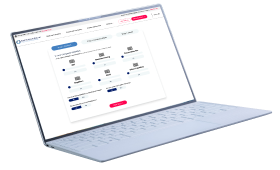
Understand your company's position and learn more about the options available
Require Immediate Support? Free Director Helpline: 0800 644 6080
Free Director Helpline: 0800 644 6080
If your automotive business is experiencing falling revenues in an increasingly challenging trading environment and changing international trading landscape, you may be considering whether your company has a future. Whether you own a car dealership or a factory manufacturing vehicles or component parts, if you are experiencing significant financial distress, you may be considering placing your automotive company into liquidation
Free 60 Second Test
For Ltd Company Directors
What are you looking to do?
Choose below:
If your automotive company is already insolvent and you wish to close it for good, liquidation would be achieved by placing the company into a direct-initiated insolvency process called a Creditors’ Voluntary Liquidation – or CVL. You will need to appoint a licensed insolvency practitioner who will then be able to take care of the whole process on your company’s behalf.
This will involve identifying any assets belonging to the company - which in the case of an automotive business may include vehicles, component parts, and machinery – before arranging for these to be valued and sold. Profits obtained through the sale of assets will then be split amongst the company’s outstanding creditors according to a designated hierarchy as set out in the Insolvency Act 1986. Any company debt which remains outstanding after this point will be written off when the company is liquidated, unless this borrowing has been secured with a personal guarantee.
Liquidating your automotive business will mean the end of your company. While this is not something which was likely to be part of your plans, in some instances, liquidation can be the best option available when a company becomes insolvent. Voluntarily placing your company into liquidation will allow for eligible staff to claim redundancy, as well as shielding the company’s existing creditors from experiencing further losses which could well be the outcome if you continue to trade and continue to see revenue decline.
As the director of an insolvent company you have a number of legal responsibilities, one of which is to not partake in any behaviour which could worsen the position of your creditors. By seeking the advice of an insolvency practitioner at the first signs of trouble, you are not only helping to protect your creditor’s interests, but you are also demonstrating a desire to adhere to your duties when you become aware your automotive business is insolvent.
“Spoke with Chris who put me at ease straight away. He was very knowledgeable and listened intently to all my worries and concerns. Will definitely be using Real Business Rescue and advise anyone with business issues to give them a call.”
Diana
If your automotive business is experiencing a period of instability this does not necessarily need to mean the end for your business. It may just mean that the company needs to undergo a process of restructuring – whether operational, financial, or a combination of both – in order to get it back on track.
Having a solid, robust, yet flexible plan can help to immediately stabilise the company in the short-term, and give the business the very best chance of long-term success. As part of this, manufacturing capacity may have to be streamlined to preserve both funds and resources, as well as a consideration as to whether your organization needs to exit unprofitable markets to preserve cash reserves during this time.
Our team of business turnaround experts will explore every possible option of saving your business, whether this is the entire company, or those elements of it which are deemed viable. Whereas voluntarily placing a company into liquidation is done through a CVL, when it comes to rescuing a financially distressed business, there are a whole host of options for achieving this.
If your automotive company has found itself operating on increasingly reduced income and you are at risk of defaulting on covenants, or other financial arrangements, we can help with liaising with the bank on your company’s behalf to find a way forward.
Entering into negotiations with your creditors may be the best way of immediately improving cash flow, while waiting for revenues to increase. This type of negotiation could be aimed at one creditor in particular – such as a bank, HMRC, or a supplier – or alternatively, you could propose a repayment plan which involves a number of creditors at the same time.
This is done by way of a legally-binding repayment plan known as a Company Voluntary Arrangement (CVA). CVAs are a formal insolvency process and therefore they can only be entered into with the supervision of a licensed insolvency practitioner. A typical CVA will run over 3-5 years and allow for a financially distressed company to pay back its outstanding debts at a rate which is financially sustainable. Depending on what the company can afford to repay, some debt may wiped out during the process.
Your appointed insolvency practitioner will draw up a proposal which takes into account your company’s level of debt as well as its ability to repay, and will subsequently present this to creditors who must then vote on whether the proposal is acceptable. At least 75% (by value) of the company’s creditors must give their agreement to the proposed CVA in order for it to be implemented. Once agreed the CVA becomes legally binding on all parties.
The thing to remember about a CVA is that it works on the principle of using future income to repay current liabilities. Due to this, only those companies which can demonstrate long-term future viability to their creditors are likely to be able to successfully negotiate a CVA.
For those automotive businesses which are experiencing growing creditor pressure, legal threats, or simply those that require more time for a workable solution to be devised, placing the company into administration may be the most appropriate solution. A company cannot remain in administration indefinitely, although the process does allow for additional time and space to consider all available options.
If your automotive business is general performing adequately, but it is in need of an injection of capital to top up its working cash reserves or to allow operations to be kicked back into action, our in-house commercial finance team are here to help.
We can liaise with lenders on your behalf, ensuring your case for refinancing is presented in the most appealing light. Our team are also able to access external credit control support for your company if required.
UK’s number one for director advice
We handle more corporate insolvency appointments than any other UK firm; demonstrating our commitment to helping directors and business owners in financial distress.
The team are available now - 0800 644 6080
Get a Quote Find Your Nearest Office
If your automotive business is trading as a limited company, there is a good chance that you also classed an employee of the business as well as its director. This could be particularly important if your company becomes insolvent and you enter a formal liquidation process such as a CVL.
While your employees will be able to make a claim for redundancy upon the liquidation of the company, so will you. There are a number of criteria which you must meet in order to qualify for a redundancy payout, but if you have worked for your automotive company for a minimum of 16 hours per week for at least two years, as well as being paid a regular salary for this work through PAYE, it is highly likely that you will have a valid redundancy claim.
The amount you may be in line for will be calculated based on your length of service with the company, your age at the time of redundancy, and the salary you were paid through PAYE. You may also be entitled to other statutory entitlements such as unpaid wages, unpaid holiday, and notice pay, all of which could boost your final total considerably.
As part of the liquidation process, your appointed insolvency practitioner will be able to refer you to a fully regulated claims management firm who can help qualify your entitlement to claim.
For Ltd Company Directors
What are you looking to do?
Choose below:
We provide free confidential advice with absolutely no obligation.
Our expert and non-judgemental team are ready to assist directors and stakeholders today.

Understand your company's position and learn more about the options available

Find your nearest office - we have more than 100 across the UK. Remote Video Meetings are also available.

Free, confidential, and trusted advice for company directors across the UK.